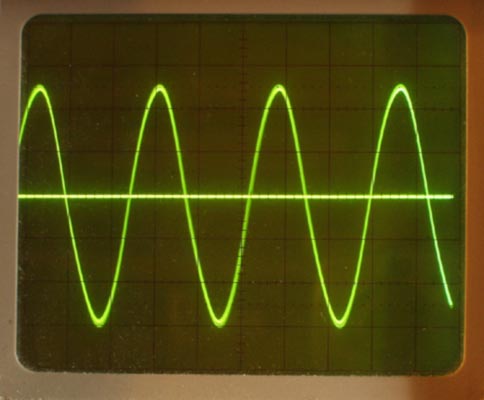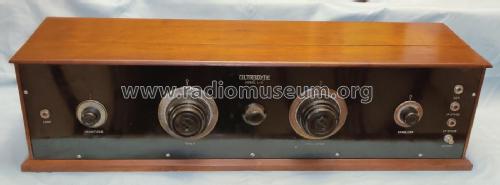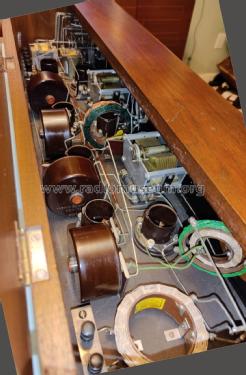Ultradyne L2 UV tubes
Phenix Radio Corp.; New York
- País
- Estados Unidos
- Fabricante / Marca
- Phenix Radio Corp.; New York
- Año
- 1924/1925
- Categoría
- Radio - o Sintonizador pasado WW2
- Radiomuseum.org ID
- 50438
-
- alternative name: Lacault, R.E.
Haga clic en la miniatura esquemática para solicitarlo como documento gratuito.
- Numero de valvulas
- 8
- Principio principal
- Superheterodino en general; ZF/IF 115 kHz
- Número de circuitos sintonía
- 7 Circuíto(s) AM
- Gama de ondas
- OM (onda media) solamente
- Tensión de funcionamiento
- Baterías recargables o pilas
- Altavoz
- - Este modelo usa altavoz exterior (1 o más).
- Material
- Madera
- de Radiomuseum.org
- Modelo: Ultradyne L2 [UV tubes] - Phenix Radio Corp.; New York
- Forma
- Sobremesa, caja, normalmente con tapa (panel no inclinado).
- Ancho, altura, profundidad
- 32 x 9 x 10 inch / 813 x 229 x 254 mm
- Anotaciones
- The Ultradyne L2 was first manufactured for the UV201A with thoriated filament, which was announced in December 1922. In August 1925 the UV201A was withdrawn and replaced by the UX201A. They have later also been fitted with UX112, UX171 or UX171A but we don't put that into the tube line up as "or" because that was at least a year later of the UX201A variant.
The Ultradyne L2 is a super with RF reaction. Whether it is similar to the Keystone L2's is uncertain. The manufacturer Keystone Radio Service offered kits according to The Radio Trade Directory of Aug.,1925.
Two dials (primary tuning control knobs).
Siehe auch Triodensuperhets.
- Ext. procedencia de los datos
- Ernst Erb
- Procedencia de los datos
- Radio Collector`s Guide 1921-1932
- Referencia esquema
- Rider's Perpetual, Volume 1 = 1931/1934 (for 1919-1931)
- Documentación / Esquemas (1)
- Rider's Perpetual, Volume 1 = 1931/1934 (1919 to 1931) (see misc. 1-11 Lacault)
- Documentación / Esquemas (2)
- Radio Broadcast, Nov. 1924, p. 111
- Otros modelos
-
Donde encontrará 15 modelos, 9 con imágenes y 5 con esquemas.
Ir al listado general de Phenix Radio Corp.; New York
Colecciones
El modelo Ultradyne es parte de las colecciones de los siguientes miembros.
Contribuciones en el Foro acerca de este modelo: Phenix Radio Corp.;: Ultradyne L2
Hilos: 1 | Mensajes: 1
Die Besonderheit der Ultradyne-Schaltung liegt darin, dass die Mischtriode keine Anodengleichspannung erhält. Stattdessen liegt sie an der Oszillatorwechselspannung. und wird damit voll durchgesteuert.
Die Anodenspannung für die Mischtriode kommt galvanisch über mehrere Spulen (1.ZF-Filter und Eingangskreis-Rückkopplung) vom Gitter der Oszillatorröhre. Am Gitter der Oszillatorröhre steht die Schwingung leicht ins negative verschoben, mit 50 V positiver und 60 V negativer Halbwelle. Entsprechend an der Mischeranode (Oszillogramm ohne Eingangssignal, bei verstimmtem Eingangskreis).
20V/div. 
Konrad Birkner † 12.08.2014, 02.Sep.11
















